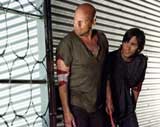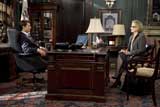Bratz
Posted on November 27, 2007 at 10:07 pm
If the “Transformers” were the snips and snails and puppy dog tails of the toys-to-movie genre of the summer of 2007, the Bratz were the sugar and spice.

Posted on November 27, 2007 at 10:07 pm
If the “Transformers” were the snips and snails and puppy dog tails of the toys-to-movie genre of the summer of 2007, the Bratz were the sugar and spice.

Posted on November 18, 2007 at 2:40 pm
It will blow the box of popcorn out of your hand.

Posted on November 16, 2007 at 9:58 pm
Filmmaker Jennifer Crandall has created a charming series of short autobiographical videos featuring everyday people talking about their lives, experiences, and lessons learned. Participants of all ages and backgrounds have spoken about friends, families, vocations and avocations. Participants have included a transplanted refugee from Katrina, a nun, a boy with Down Syndome and his mother, a waitress, a lawyer, a teenage girl, a transgendered woman, a man recovering from amnesia, an Islamic former beauty pagent contestant — each one is utterly captivating and transcendant.
This very brief interview with African immigrant Edward Fahbulleh is one of the best. I love its title: On Being Rich.
I love them all, but my all-time favorite is Jessica Tibbits. Each one is just a few moments, but each is unforgettable.
Posted on November 13, 2007 at 1:10 pm
Two hilarious You Tube hits put complaints to music.
Complaints Choirs started in Birmingham, England and are popping up all over the world. Here, the Helsinki Complaints Choir combines the universal and the very particular in a hilarious and harmonic tribute to the things that drive people crazy:
(Thanks to Salon’s Broadsheet for the tip.)
And Anita Renfroe became a media sensation with this tribute to mothers set to the tune of the “William Tell Overture” — any mom who has not said everything on this list deserves a whole day without a carpool:
Posted on November 7, 2007 at 3:21 pm
C| Lowest Recommended Age: | High School |
| MPAA Rating: | MPAA Rating: R for some war violence and language |
| Profanity: | Some strong language |
| Alcohol/ Drugs: | None |
| Violence/ Scariness: | Brief graphic battle violence |
| Diversity Issues: | A strength of the movie is strong, loyal relationships between diverse characters |
| Date Released to Theaters: | November 9, 2007 |
It is more op-ed than movie. “Lions for Lambs” is a well-meaning attempt to encapsulate and move forward one segment of our current political debates. But it is mostly speeches, not stories.
